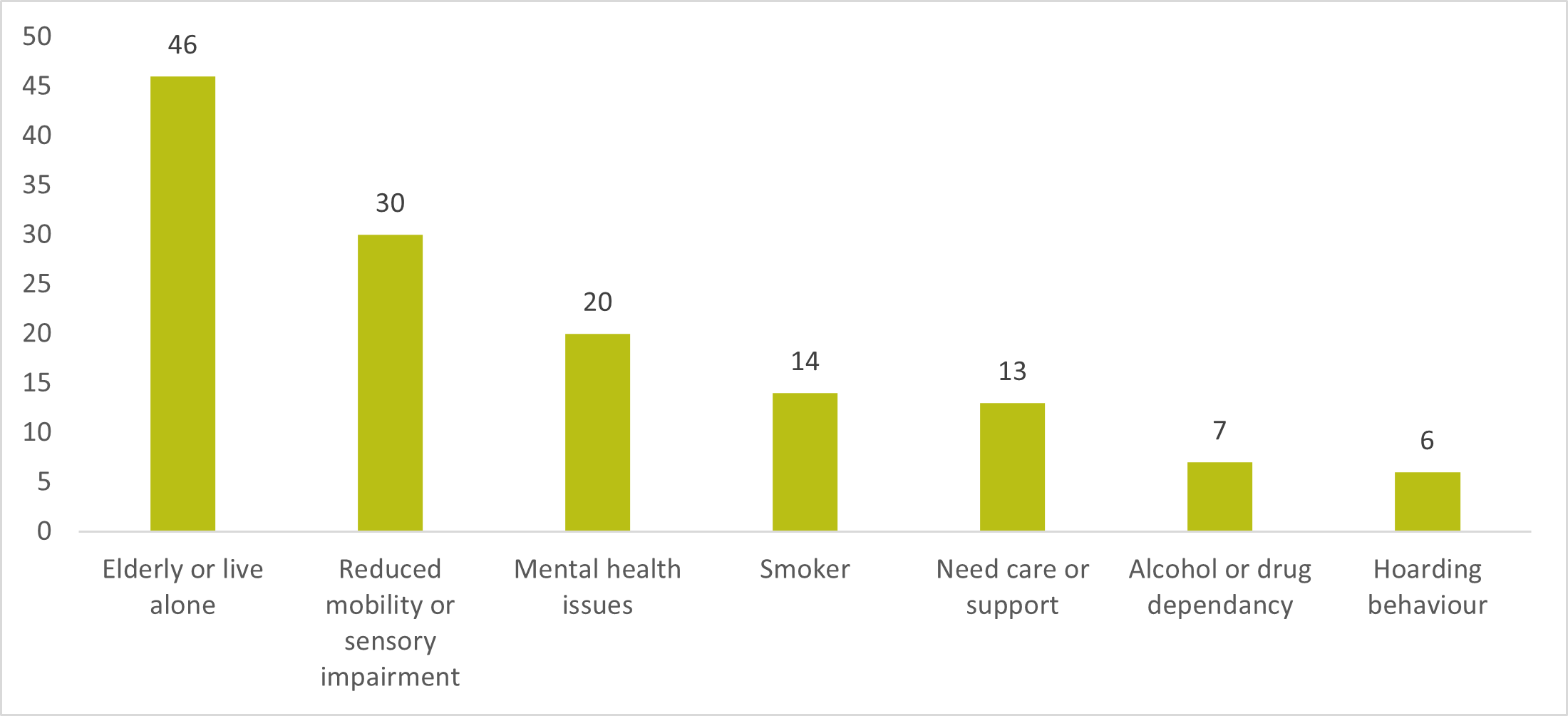Overview
Executive summary
This report summarises 2024’s Community Risk Management Plan (CRMP) engagement findings. This was a lower profile activity than the first or final stage to avoid process fatigue. Promotion was less wide-spread and more targeted.
The survey and poll results show that the top issues are:
- Road Traffic Collision
- Dwelling (house) fire
- Flooding
- Non-domestic fire
- Wildfire
- Deliberate fire (arson)
Efforts were made once again to reach a broad Lincolnshire audience. While not entirely successful in getting a proportionate response from all seldom heard groups, there were responses from all geographies and SHERMAN representatives.
Importantly, further learning was gained that will be applied in the final, consultation stage later in the year. Recommendations include face-to-face targeting of young people and those identifying as being from an ethnic minority.
Introduction
Fire and Rescue services across England must, by law, produce a Community Risk Management Plan (CRMP) on a four-yearly cycle (previously known as an integrated risk management plan). The process to produce the plan must include public and professional stakeholders and the approach taken is open to His Majesty’s Inspectorate scrutiny, as well as local scrutiny and approval.
The service is part way through a three-stage process of engagement. The first pre-engagement stage happened in autumn 2022 to ‘test’ knowledge, awareness and risk identification. The second stage happened through spring 2023. The key objectives of stage 2 were to:
- ascertain public views on proposed risk levels
- continue improved response, but with low key promotion to avoid survey fatigue
- further target ‘seldom heard communities’, reached and missing from stage 1 and updated EqIA, representative of the new census data
- have translatable content on demand (to highly prevalent other languages in Lincolnshire)
- use incentives for survey responses (entered into draw to win £20 voucher)
- use remote face-to-face input using tablets or other technology
- incorporate Let’s talk Lincolnshire as a platform
- make responses quick and easy to complete, using a poll in addition to a survey
- advertise using multiple internal or external platforms, but primarily target previous respondents and underrepresented groups from stage 1
Stakeholders
Using Lincolnshire County Council (LCC) databases, online research and existing network contacts the following were targetted:
- members of the public – news release on LCC website, social media, direct email invite
- one online news release, weekly socials posts in LCC and Lincolnshire Fire and Rescue (LFR), two targeted emails to members of the engagement database and stage 1 participants who wanted to remain informed (almost one quarter of all respondents)
- individuals, groups and organisations who can reach out to members of the public – direct email containing a newsletter article to share with their networks
- targeted messages (launch) to around 1000 people
- Fire and Rescue use the SHERMAN vulnerability approach, all of whom were included in the EqIA – email to representative individuals and groups
- the most common SHERMAN characteristics identified related to age (46 elderly or live alone, 30 reduced mobility or sensory impairments and 14 need care or support) and mental health issues (20). The graph below shows response numbers from people with SHERMAN characteristics

Just over 95% of respondents who answered the question about ethnicity described themselves as White British. This is slightly higher than stage 1 (93%). Half of all responses from people with other ethnic backgrounds had mixed heritage. This was about 2.5% of all responses.
Methodology
An online survey was the primary means of engagement during stage 2, with the addition of a poll to make it easier for people to respond in one click. All elements are translatable into many languages and work with read out technology for example. It was promoted widely on social media and a news release featured on the LCC home page. Previous respondents and those who had registered an interest in community safety received a direct email. It was consciously done in a more low-key manner than stage 1 or 3, to avoid CRMP or survey fatigue.
It was available on request in different formats for those without digital access and those for whom English wasn’t a first language for example. The single equalities council were targeted as part of equality impact assessment action planning, but the organisation was in the process of migration at the time. They will be engaged further for the final stage consultation. More information was sent directly to colleges, universities and local religious organisations in the hope of extending reach and interest. The final stage will avoid religious holidays such as Ramadan and Easter, making it easier for people to participate.
In response to a mid-point review, the survey and poll were left open for longer than originally planned to allow young people and people of all backgrounds to be targeted face-to-face at upcoming events. The same methodology of targeted face to face engagement will be applied at key events in stage 3.
